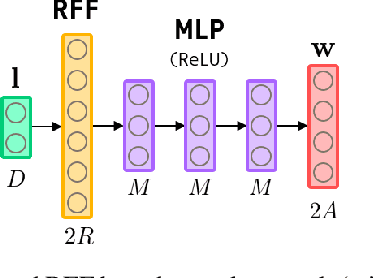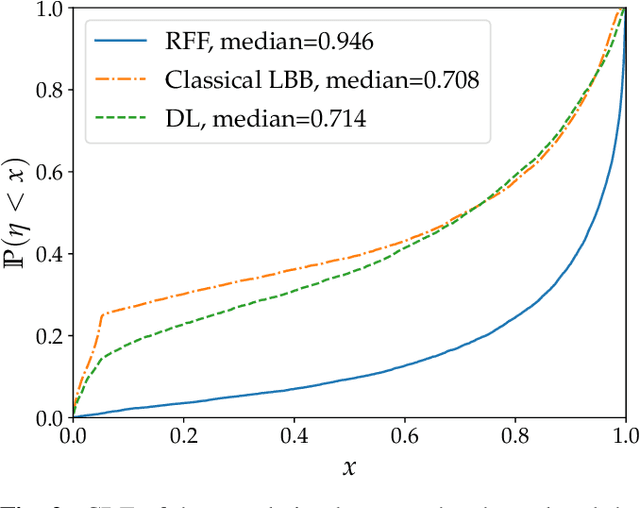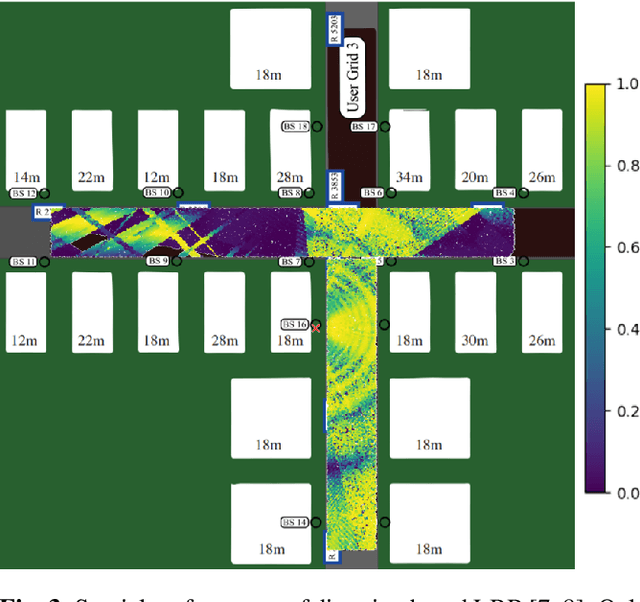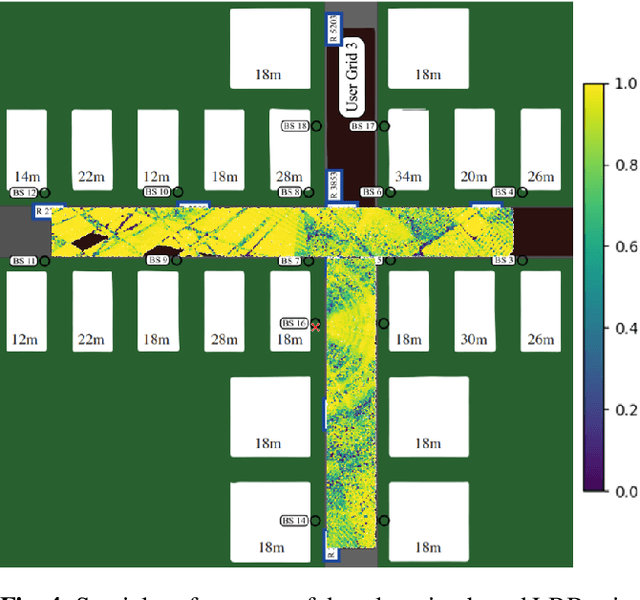Taha Yassine
IETR, INSA Rennes
Model-based Deep Learning for Beam Prediction based on a Channel Chart
Dec 04, 2023Abstract:Channel charting builds a map of the radio environment in an unsupervised way. The obtained chart locations can be seen as low-dimensional compressed versions of channel state information that can be used for a wide variety of applications, including beam prediction. In non-standalone or cell-free systems, chart locations computed at a given base station can be transmitted to several other base stations (possibly operating at different frequency bands) for them to predict which beams to use. This potentially yields a dramatic reduction of the overhead due to channel estimation or beam management, since only the base station performing charting requires channel state information, the others directly predicting the beam from the chart location. In this paper, advanced model-based neural network architectures are proposed for both channel charting and beam prediction. The proposed methods are assessed on realistic synthetic channels, yielding promising results.
Optimizing Multicarrier Multiantenna Systems for LoS Channel Charting
Sep 28, 2023Abstract:Channel charting (CC) consists in learning a mapping between the space of raw channel observations, made available from pilot-based channel estimation in multicarrier multiantenna system, and a low-dimensional space where close points correspond to channels of user equipments (UEs) close spatially. Among the different methods of learning this mapping, some rely on a distance measure between channel vectors. Such a distance should reliably reflect the local spatial neighborhoods of the UEs. The recently proposed phase-insensitive (PI) distance exhibits good properties in this regards, but suffers from ambiguities due to both its periodic and oscillatory aspects, making users far away from each other appear closer in some cases. In this paper, a thorough theoretical analysis of the said distance and its limitations is provided, giving insights on how they can be mitigated. Guidelines for designing systems capable of learning quality charts are consequently derived. Experimental validation is then conducted on synthetic and realistic data in different scenarios.
Deep learning for location based beamforming with NLOS channels
Dec 29, 2021



Abstract:Massive MIMO systems are highly efficient but critically rely on accurate channel state information (CSI) at the base station in order to determine appropriate precoders. CSI acquisition requires sending pilot symbols which induce an important overhead. In this paper, a method whose objective is to determine an appropriate precoder from the knowledge of the user's location only is proposed. Such a way to determine precoders is known as location based beamforming. It allows to reduce or even eliminate the need for pilot symbols, depending on how the location is obtained. the proposed method learns a direct mapping from location to precoder in a supervised way. It involves a neural network with a specific structure based on random Fourier features allowing to learn functions containing high spatial frequencies. It is assessed empirically and yields promising results on realistic synthetic channels. As opposed to previously proposed methods, it allows to handle both line-of-sight (LOS) and non-line-of-sight (NLOS) channels.
mpNet: variable depth unfolded neural network for massive MIMO channel estimation
Aug 07, 2020



Abstract:Massive MIMO communication systems have a huge potential both in terms of data rate and energy efficiency, although channel estimation becomes challenging for a large number of antennas. Using a physical model allows to ease the problem by injecting a priori information based on the physics of propagation. However, such a model rests on simplifying assumptions and requires to know precisely the configuration of the system, which is unrealistic in practice. In this paper we present mpNet, an unfolded neural network specifically designed for massive MIMO channel estimation. It is trained online in an unsupervised way. Moreover, mpNet is computationally efficient and automatically adapts its depth to the SNR. The method we propose adds flexibility to physical channel models by allowing a base station to automatically correct its channel estimation algorithm based on incoming data, without the need for a separate offline training phase. It is applied to realistic millimeter wave channels and shows great performance, achieving a channel estimation error almost as low as one would get with a perfectly calibrated system. It also allows incident detection and automatic correction, making the base station resilient and able to automatically adapt to changes in its environment.
 Add to Chrome
Add to Chrome Add to Firefox
Add to Firefox Add to Edge
Add to Edge